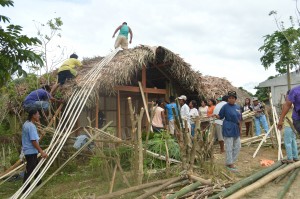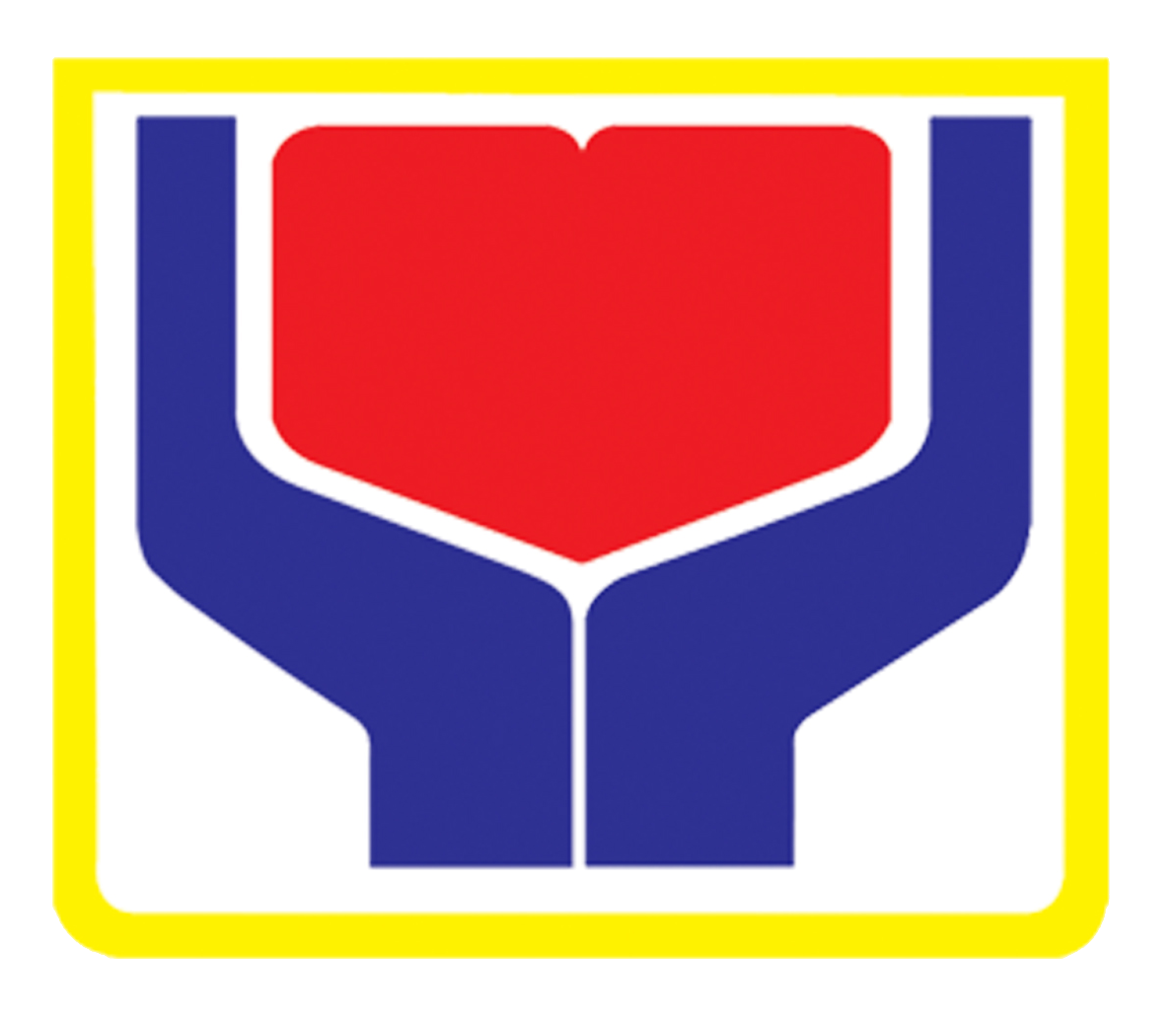
In a village where it takes almost a 10-hour hike to reach the town proper, progress seems to be as slow and as far.
Residents have mastered the art of living simply—of which they describe as “isang kahig, isang tuka.” For most of them, being able to feed their hungry stomachs is enough reason to be contented.
Today, however, this small village of San Pablo Suha in the town of Catanauan, Quezon Province has been showing signs of progress. And little by little, the residents are dreaming a better life not only for themselves but for the whole community.
The beginning of dreams coming true
Most of the residents in the village may have been contented with ensuring food on the table; however, the coming of the Pantawid Pamilyang Pilipino Program in 2010 in the barangay gave most of the poor families an opportunity to dream bigger, especially for their children.
“Hindi sapat ang kinikita ng halos lahat sa amin kaya hirap na hirap kaming magpaaral ng mga bata. Sa tulong ng Pantawid Pamilya, nagkaroon kami ng pag-asa dahil nasusuportahan na namin ang edukasyon ng aming mga anak,” said Leonora Javier, 44.
To date, there are 161 household-beneficiaries of the program in the village.
With more and more children going to school, even the non-beneficiaries of the program notice the change in the barangay.
Gregorio Sanchez, 44, a native of the barangay, observes that the program has taught the parents to value the education of their children.
“Kung wala siguro ‘yung programa, marami pa rin siguro ang hindi nakakapag-aral,” shared Gregorio.
Melba De Rojas, 41, another Pantawid Pamilya beneficiary, said that seeing their children in school means a lot to parents like her.
“Ang pangarap namin sa aming mga anak ay mas makaangat sila sa buhay, hindi katulad ng binibigay namin sa kanila ngayon na isang kahig, isang tuka. Gusto namin, kapag nagkaroon sila ng sariling mga pamilya, makakapagpaaral sila ng mga anak at makakakain sila nang tama sa oras kahit walang suporta mula sa gobyerno,” shared Melba.
Improved access in their community
Their barangay’s geographic situation has also been a long time problem of the residents. According to them, despite the support of the government for their children, their location hampers progress of the livelihood of most families.
Resident Marcelino Redoma, 57, shares that farmers like him usually spend a lot of time and money to bring their crops to the market, which leaves them little profit for their families.
What he cannot forget, however, is how this situation took the life of his wife several years back.
“Nagkaroon ng kumplikasyon sa panganganak ang asawa ko noon kaya kinailangan naming dalhin sa ospital sa bayan. Mga 30 tao kaming nagtulong tulong sa pagbubuhat sa kanya ng mahigit 10 oras. Pagdating namin sa bayan, huli na ang lahat,” Marcelino recalled.
Gladly, they need not suffer from this kind of life anymore. In 2013, another program of the national government was introduced to the village—the Kapit-Bisig Laban sa Kahirapan-Comprehensive and Integrated Delivery of Social Services (Kalahi-CIDSS).
In its implementation, they pushed for the construction of a farm-to-market road to improve access to their barangay.
“Malaki na ang nabago sa aming barangay simula noong nagkaroon kami ng maayos na kalsada. Mas nadagdagan ang kita naming mga magsasaka dahil mas mura at mas mabilis na ang pagdadala ng mga produkto sa pamilihan,” said Melba.
She also added that parents like her have found peace of mind because of the new road.
“Kung may magkasakit man sa pamilya, madali na naming nadadala sa bayan dahil naaabot na kami ng sasakyan. ‘Yung mga bata ring pumapasok sa school, hindi na nila nararanasan ang paglalakad sa maputik na daan dahil p’wede na silang sumakay papuntang eskwelahan,” Melba shared.
Besides the farm-to-market road project in 2013, the residents also implemented other projects such as the concreting of the critical section of the barangay road and spillway in 2015 under the Kalahi-CIDSS program.
Sustaining the progress
Both the Pantawid Pamilya and the Kalahi-CIDSS taught the residents that it is possible to change the course of their lives.
“Sa FDS [Family Development Sessions], marami kaming natutunan hindi lang tungkol sa pagpapaunlad ng aming pamilya. Natuto rin kami na makipagtulungan sa barangay para sa iisang layunin,” shared Melba, who added that before, families seemed to care only for their household’s welfare.
The FDS is a component of the Pantawid Pamilya program that teaches parent-grantees on various topics including strengthening marital relationships, budget management, children’s rights and disaster preparedness among others.
Brgy. Captain Roberto Estrella Sr. also cited how the concept of ‘bayanihan’ has been exemplified in the barangay in the implementation of the Kalahi-CIDSS.
“Para mas malayo ang marating ng pondo, sinabi ng mga residente na libre silang magtatrabaho para sa proyekto at iyon naman ay kanilang tinupad,” said Capt. Estrella.
With this new perspective among the residents, they only have one goal now—that is to altogether taste a sweeter life. This, they are currently proving through another community project under the Sustainable Livelihood Program using the Bottom-Up Budgeting scheme.
Called Transportasyon Bayanihan sa Barangay San Pablo Suha (TBBS), their association has been funded with PhP1,110,000.00 this February 2016 and caters to 130 beneficiaries, 80 percent of this are beneficiaries of the Pantawid Pamilya program.
“Yung TBBS po ay samahan ng iba’t ibang asosasyon dito sa aming barangay katulad ng mga magsasaka, kababaihan at PTA [Parent and Teachers Association]. Napagkasunduan naming magtayo ng buy-and-sell ng mga produkto. Dito ibebenta ng mga residente ang kanilang mga produkto at kami ang magdadala nito sa pamilihan,” explained Gregorio, who was elected President of the association.
The community business will also sell basic commodities such as rice for members and non-members alike.
“Yung dating kanya-kanya, ngayon ay nagkakaisa na. Masarap sa pakiramdam na kami ngayon ay sama-sama sa tiyak na pag-unlad,” a positive Leonora shared.
For the rest of the residents of Brgy. San Pablo Suha, their struggles in the past are only part of the history that they will tell their grandchildren and never allow them to experience again. Though it is true that the opportunities provided to them by the government led them to a better life, they know that sustaining the progress will be in each other’s hands.#
***The three programs implemented in Brgy. San Pablo Suha are the core social protection programs of the Department of Social Welfare and Development (DSWD). The Pantawid Pamiyang Pilipino Program, Kalahi-CIDSS and SLP, through the DSWD’s convergence strategy, are all geared towards improving the living condition of poor families.
The Pantawid Pamilya invests on the human capital through the provision of conditional cash grants in support for the health, nutrition and education of children age zero to 18. Meanwhile, the Kalahi-CIDSS helps improve access of poor communities to social services through engaging the local residents in identifying, planning and implementing need-responsive projects. The SLP, on the other hand, prepares families towards self-sufficiency through building their capacities towards micro-enterprise development or gainful employment.
